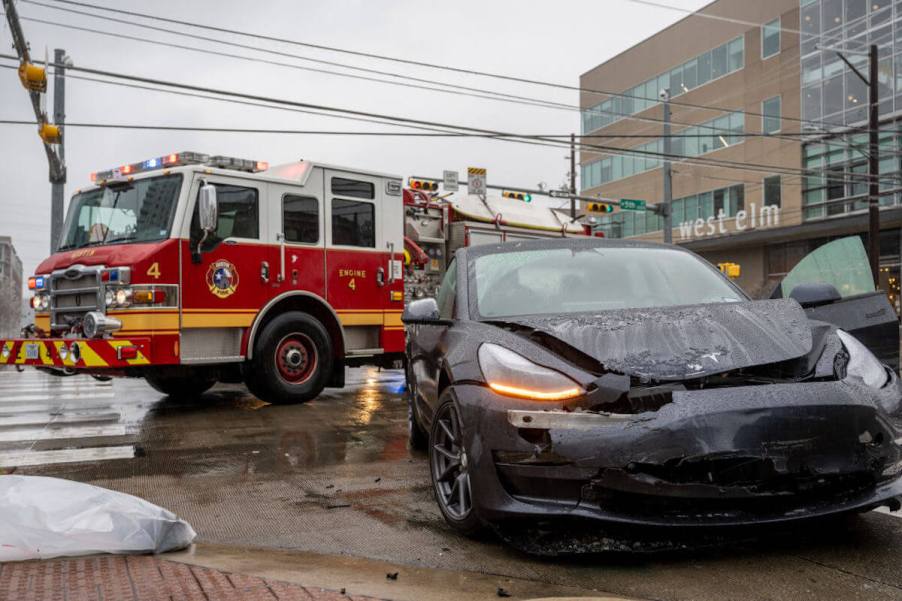
Minor EV Battery Damage In Accident? Insurance Company Will Total Car
It’s unfortunate that the more we see how the electric vehicle revolution increases, the more everything connected with it increases as well. From electrical rates to repairs and recalls, many unforeseen costs continue to nibble at some of the early myths about EVs. Now, insurance companies are increasing totaling EVs with only minor battery damage after a crash. Why are insurance companies doing this?
How sustainable are damaged EV batteries?

Insurance companies with ever-increasing frequency are writing off EVs involved in minor accidents. Some of these cars only have a few hundred miles on them. This impacts all of us because as insurance companies pay out for the price of a new vehicle, our premiums rise in lockstep.
There is also another effect that may actually be worse. One of the main reasons for going electric is to lower our carbon footprint. It is an environmental effort towards a sustainable future. “An EV isn’t very sustainable if you’ve got to throw the battery away after a minor collision,” Thatcham Research director Matthew Avery told Reuters.
Can an EV battery be repaired?

It was the hope that EV batteries would last for at least a decade or more. Then, they could be repurposed for electric grid power storage or rebuilt to last at least another decade. Especially since an EV’s battery makes up over 50% of its cost, it’s the most expensive component, it goes without saying this is the most important part of an EV.
But that is not what is happening. Once a battery shows damage, it’s more feasible for insurance companies to just total the entire car. And that’s especially true with EVs like the Tesla Model Y. Its battery pack is also a structural part of the car. As a result, most EV repair experts say that the Model Y battery is unrepairable.
How expensive is an EV battery?

For another Tesla, the Model 3, a replacement battery is $20,000. The low-end price for a new Model 3 is $43,000. So with minor battery damage combined with body damage easily over 50% of the EVs need repair or replacement. Then there is the potential for litigation down the road should that Model 3 be in an accident.
“EVs constitute only a fraction of vehicles on the road, making industry-wide data hard to come by, but the trend of low-mileage zero-emission cars being written off with minor damage is growing,” says Reuters. “Tesla’s decision to make battery packs a “structural” part of the car’s body, has allowed it to cut production costs but risks pushing those costs back to consumers and insurers.
“Tesla has not referred to any problems with insurers writing off its vehicles. But in January CEO Elon Musk said premiums from third-party insurance companies ‘in some cases were unreasonably high.’”
How clean is EV battery production?

Another problem with EV batteries is that their production creates many more C02 emissions than gasoline-powered vehicles, according to Allianz Center for Technology’s Christoph Lauterwasser. “If you throw away the vehicle at an early stage, you’ve lost pretty much all advantage in terms of CO2 emissions,” he said.
In the UK, there are no battery recycling centers. So EV batteries are stored in special containers. What is puzzling is that there must be plenty of viable cells in those batteries. Why this reuse isn’t in place seems like a question worth pursuing.
Nonetheless, right now it is an ever-increasing concern as EV adoption ramps up. Both Ford and GM are developing EV platforms that make battery access easier, and repairs less costly. That needs to be the gold standard if the EV zeitgeist is to thrive.



